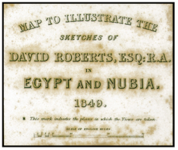POMPEY'S PILLAR.
THIS relic of antiquity is the first object seen, in approaching Alexandria from the sea, on the coast of Egypt. “It stands on an eminence,” says Wilkinson, “about 1800 feet to the south of the present walls. It consists of the capital, shaft, base, and pedestal, which last reposes on substructions of smaller blocks, which once belonged to older monuments, and were probably brought for this purpose to Alexandria. On one of them the name of Psammeticus can be read. These substructions were evidently once under the level of the ground, and formed part of a paved area, of which the stones around the Columm have been removed, to the great risk of the monument itself. The proper name of this Column has been much questioned. The murder of Pompey on the coast of Egypt probably led to the original error that it was his cenotaph; but the successful deciphering of an almost obliterated inscription on the pedestal shews that it was erected by Publius, a Prefect of Egypt, in honour of Diocletian. The total height of the Column is 98 feet 9 inches, of this the shaft is 73 feet; the circumference is 29 feet 8 inches. The capital and base are of inferior workmanship, but the shaft is elegant and well wrought, and is probably a production of an earlier and better time; and it has been conjectured belonged to a temple of Serapis. On the summit Wilkinson observed a hollow of considerably size, as if intended for the admission of a statue; and, indeed, there are said to be old prints extant in which a statue surmounts the Column. The summit was some years ago first attained by a party of sailors, who passed a rope over the top by means of a kite. It has often since been visited; and, among others, by Miss Talbot, who sent a note to our Consul, Mr. Salt, dated “From the top of Pompey’s Pillar;” to which he replied, dating his answer “From the bottom of Jacob’s Well.”


